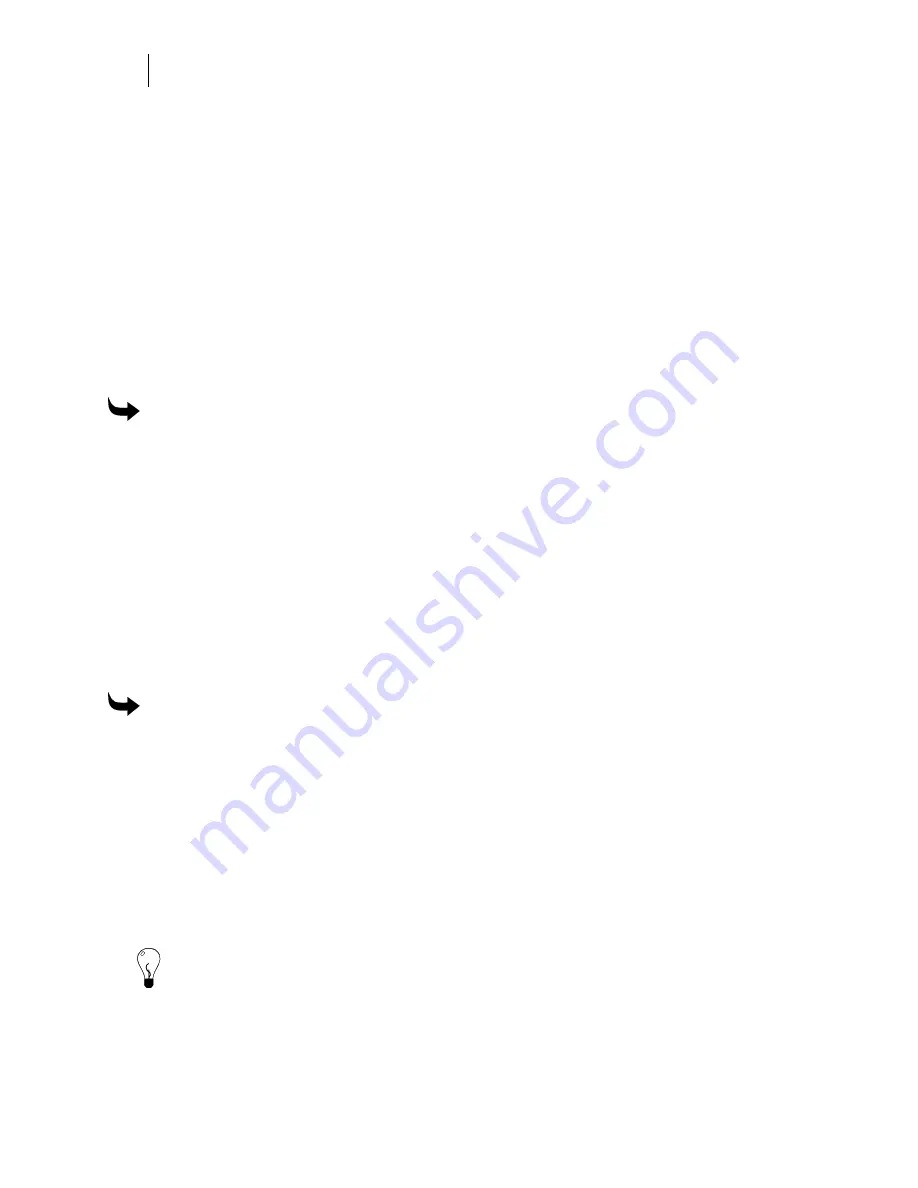
386
Chapter 35:
Scanning Artwork
♦
The
Vantage Scan II
program in the GSP OMEGA program group allows single or
multiple black and white image files to be vectorized into PLT files outside of
Composer.
♦
Composer Tools >
Generate Decal Cut:
Generate Decal Cut creates a cutline around
the footprint or extremities of image files or vector files on the Composer work surface.
The source artwork can be a monochrome or color image, or vector shapes. This makes
it easy to generate a cut line for jobs that will be printed then cut on a vinyl cutter.
Color Management and scanning
One of the biggest problems of digital printing is color consistency from the original artwork to
the scanner to other programs to the monitor and to the final output device. GERBER OMEGA
includes a Color Management system that helps make color more consistent through the
production process.
To use the OMEGA Color Management system
1
Install the MonacoEZcolor software included with your OMEGA package
2
Use the MonacoEZcolor software to profile you scanner and paper printer
3
Assign the scanner profile to scanned images as the Source profile as they are
imported into Composer
4
Use the MonacoEZcolor software and a monitor calibration device to profile you
monitor
5
Use the monitor profile you created in the OMEGA Color Management dialog box.
6
Be sure to use the output profile in Composer and GSPPlot that closely matches how
you intend to output the final image file. For Gerber printers, the profiles are provided
by GSP in OMEGA software. You do not have to make these profiles.
To design, import, and output images
1
Learn the basics of the Color Management system of the other programs.
2
Be aware of the color model you use to save your images (RGB or CMYK).
3
Be aware of any profiles assigned to files that are saved from other programs.
4
Assign those profiles as the Source Profile when those images are imported into
Composer.
5
Be sure to use the output profile in Composer and GSPPlot that closely matches how
you intend to output the final image file including printer, material, foils, and
halftones.
Tip: Once the image or raster file is in Composer, you can perform basic editing functions using
Composer tools or you can edit the file in a third-party image editing program. For more
information see “Editing images.”
Summary of Contents for OMEGA CP
Page 16: ......
Page 20: ......
Page 36: ......
Page 42: ...28 Chapter 4 Saving Files...
Page 44: ......
Page 68: ......
Page 92: ......
Page 96: ...82 Chapter 7 Selecting Elements of the Design...
Page 98: ......
Page 132: ......
Page 146: ......
Page 154: ......
Page 162: ......
Page 182: ......
Page 188: ......
Page 204: ......
Page 234: ......
Page 238: ......
Page 244: ......
Page 254: ...240 Chapter 22 Strokes Adding Print Thickness to the Outline of Objects...
Page 256: ......
Page 282: ......
Page 320: ......
Page 346: ......
Page 358: ......
Page 380: ......
Page 386: ......
Page 418: ......
Page 422: ......
Page 452: ......
Page 462: ......
Page 476: ......
Page 512: ...498 Chapter 44 Creating Special Effects...
Page 514: ......
Page 520: ......
Page 530: ......
Page 540: ......
Page 552: ......
Page 564: ......
Page 606: ......
Page 614: ...600 Chapter 51 Sending the Job to a Plotter or Printer...
Page 694: ......
Page 700: ......
Page 734: ......
Page 748: ......
Page 760: ...746...
Page 776: ......
Page 786: ......
Page 790: ......






























